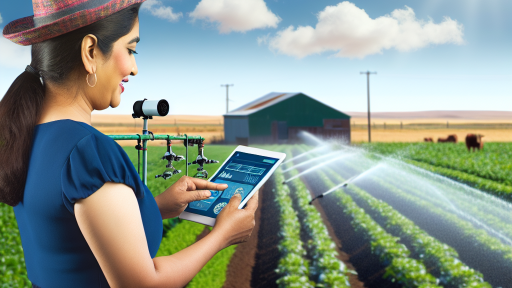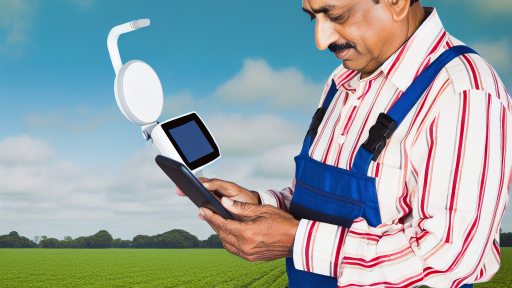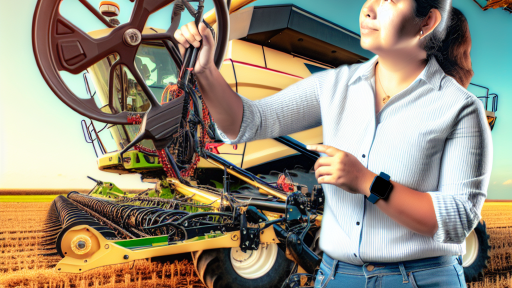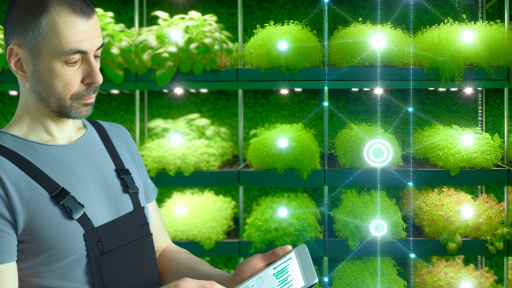Introduction to Precision Farming and Its Importance
Precision farming revolutionizes modern agriculture through technology.
It enhances productivity and resource efficiency on farms.
This approach allows farmers to make data-driven decisions.
Consequently, they can optimize yields while minimizing input costs.
Understanding Precision Farming
Precision farming involves using advanced technologies for farming practices.
Tools like GPS, sensors, and drones help in capturing data.
This data leads to informed agricultural decisions.
Additionally, it improves overall crop management strategies.
Benefits of Precision Farming
This method significantly reduces wastage of resources.
Moreover, it enhances the sustainability of farming practices.
Ultimately, it can lead to higher profit margins for farmers.
Furthermore, precision farming minimizes environmental impacts.
The Role of Technology in Precision Farming
Technology plays a critical role in precision farming.
For example, satellite imagery provides valuable insights into crop health.
Similarly, soil sensors measure moisture levels effectively.
Transform Your Agribusiness
Unlock your farm's potential with expert advice tailored to your needs. Get actionable steps that drive real results.
Get StartedThese technologies enable farmers to monitor their fields in real-time.
As a result, they can respond quickly to changing conditions.
The Future of Agriculture
The future of agriculture heavily relies on precision farming techniques.
Innovations in technology will continue to shape farming practices.
Farmers are adopting smart equipment for improved efficiency.
Additionally, the integration of artificial intelligence will enhance data analysis.
Key Technologies in Precision Farming
Overview of Precision Farming
Precision farming utilizes technology to enhance agricultural efficiency.
This approach helps farmers optimize their inputs.
It ultimately increases crop yields and reduces waste.
Global Navigation Satellite Systems (GNSS)
GNSS technology plays a vital role in precision agriculture.
It allows for accurate location tracking and mapping.
This precision helps in field variability management.
Farmers can improve their operations with precise data.
Remote Sensing
Remote sensing technology provides crucial data regarding crop health.
It uses drones or satellites to gather information efficiently.
This data supports informed decision-making and planning.
Variable Rate Technology (VRT)
Variable Rate Technology allows for tailored applications in farming.
This technology optimizes the use of fertilizers and pesticides.
As a result, it reduces costs and environmental impact.
Farm Management Software
Farm management software streamlines agricultural operations.
It helps farmers track and analyze crop data effectively.
This analysis leads to better business decisions.
Soil Sensors
Soil sensors provide real-time data on soil conditions.
This information is essential for effective irrigation management.
Showcase Your Farming Business
Publish your professional farming services profile on our blog for a one-time fee of $200 and reach a dedicated audience of farmers and agribusiness owners.
Publish Your ProfileFarmers can adjust their practices based on soil moisture levels.
Automated Equipment
Automated equipment improves efficiency on the farm.
It reduces labor costs while increasing productivity.
Examples include autonomous tractors and robotic harvesters.
Data Analytics
Data analytics is critical in precision agriculture.
It provides insights that drive strategic farming decisions.
Farmers can use data to forecast trends and assess risks.
Impact of Technology in Precision Farming
Implementing these essential tools leads to sustainable farming practices.
These technologies increase profitability and ensure future viability.
GPS Technology: Revolutionizing Field Mapping and Navigation
Introduction to GPS in Agriculture
GPS technology has transformed modern agriculture.
Farmers can utilize precise location data for various tasks.
This technology enhances the efficiency of field mapping.
Benefits of GPS Technology
GPS technology improves navigation across vast farmlands.
Accurate positioning aids in planting and harvesting processes.
Farmers can optimize equipment usage by mapping fields effectively.
As a result, they save on fuel and operational costs.
Enhancing Field Mapping
GPS assists in creating detailed maps of farming areas.
Farmers can analyze soil variability with pinpoint accuracy.
This information helps in making informed decisions.
Moreover, it allows for targeted application of inputs.
Precision Agriculture Applications
- Satellite imagery provides insights into crop health.
- Farmers can manage irrigation systems more effectively.
- Variable rate technology ensures optimal input usage.
Importance of Training and Implementation
Training is vital for the effective use of GPS technology.
Farmers should understand how to interpret GPS data.
This helps in maximizing the benefits of the technology.
Moreover, ongoing support can facilitate better implementation.
Find Out More: Robotic Solutions For Pest Control
Drones and Aerial Imagery: Enhancing Crop Monitoring and Assessment
Revolutionizing Crop Monitoring
Drones offer a revolutionary approach to crop monitoring.
They provide real-time aerial imagery of agricultural fields.
This technology enables farmers to assess crop health with precision.
Consequently, farmers can make timely decisions based on aerial data.
Benefits of Aerial Imagery
Aerial imagery enhances the understanding of field variability.
Farmers can identify areas requiring attention quickly.
This targeted observation improves resource allocation.
Moreover, it optimizes fertilizer and pesticide application.
Technology and Tools
Modern drones come equipped with advanced sensors.
These sensors capture high-resolution images and multispectral data.
Farmers can analyze this data through specialized software.
For example, software tools like Pix4D help visualize crop health.
Improving Yield and Reducing Costs
Drones assist in increasing crop yields effectively.
Precision farming reduces input costs significantly.
This technology minimizes the waste of seeds and chemicals.
Showcase Your Farming Business
Publish your professional farming services profile on our blog for a one-time fee of $200 and reach a dedicated audience of farmers and agribusiness owners.
Publish Your ProfileAs a result, profits improve alongside sustainability.
Integrating Drones into Farming Practices
Farmers must develop a strategy for drone integration.
This involves training personnel and investing in suitable equipment.
Moreover, understanding local regulations on drone usage is essential.
By addressing these factors, adoption becomes smoother and more efficient.
Delve into the Subject: Advanced Remote Sensing Techniques for Farming
Soil Sensors: Collecting Real-Time Data for Better Decision Making
Importance of Soil Sensors
Soil sensors provide critical insights into soil conditions.
Farmers can monitor moisture levels, pH, and nutrient content.
This data drives informed decisions about irrigation and fertilization.
Additionally, it helps optimize crop yields and resource use.
Types of Soil Sensors
Several types of soil sensors exist in the marketplace today.
- Moisture sensors measure the water content in the soil.
- pH sensors assess soil acidity or alkalinity.
- Nutrient sensors check the levels of nitrogen, phosphorus, and potassium.
Each type serves a specific purpose, enhancing agricultural practices.
Advantages of Using Soil Sensors
Using soil sensors offers numerous advantages for modern farming.
First, they provide real-time data, which enhances responsiveness.
Farmers can quickly adapt practices based on current soil conditions.
Second, these sensors reduce waste by optimizing resource usage.
Moreover, they can lead to increased crop productivity and profitability.
Integration with Agricultural Technology
Soil sensors integrate seamlessly with precision farming systems.
This creates a comprehensive view of farm health.
Farmers can connect sensors to software platforms for data analysis.
Such integration empowers better long-term planning and strategy.
Case Studies of Success
Successful farms have adopted soil sensors with outstanding results.
For instance, Green Valley Farms improved yield by 20% using moisture sensors.
Harvest Acres used nutrient sensors and reduced fertilizer costs by 15%.
These examples highlight the benefits of data-driven farming practices.
Find Out More: Enhancing Crop Yields with Smart Irrigation
Variable Rate Technology (VRT): Optimizing Input Usage
Introduction to Variable Rate Technology
Variable Rate Technology, or VRT, enhances farming efficiency.
This technology adjusts inputs based on field variability.
Thus, it allows farmers to apply fertilizers and pesticides more effectively.
Consequently, VRT can lead to cost savings and improved yields.
How VRT Works
VRT uses data from various sources to inform decisions.
For instance, soil tests provide insights into nutrient levels.
Additionally, satellite imagery reveals crop health across fields.
Furthermore, yield maps indicate areas needing more attention.
Integrating this data allows farmers to make informed choices.
Benefits of Using VRT
- Increased efficiency in input application
- Enhanced crop yields and quality
- Reduced environmental impact due to lower chemical usage
- Cost savings from optimized resource use
Challenges and Considerations
Though beneficial, implementing VRT presents challenges.
Data management can be complex and require specialized skills.
Moreover, initial investment costs can be significant.
Farmers must also consider the learning curve involved.
Training and education can help overcome these barriers.
Showcase Your Farming Business
Publish your professional farming services profile on our blog for a one-time fee of $200 and reach a dedicated audience of farmers and agribusiness owners.
Publish Your ProfileFuture of VRT in Precision Farming
The future looks promising for VRT in precision farming.
As technology advances, VRT will become increasingly accessible.
Additionally, enhanced sensors and software will improve data accuracy.
Thus, more farmers will adopt VRT for sustainable practices.
Ultimately, this technology will redefine modern agriculture.
Gain More Insights: Vertical Farming Equipment Essentials for Efficient Farming
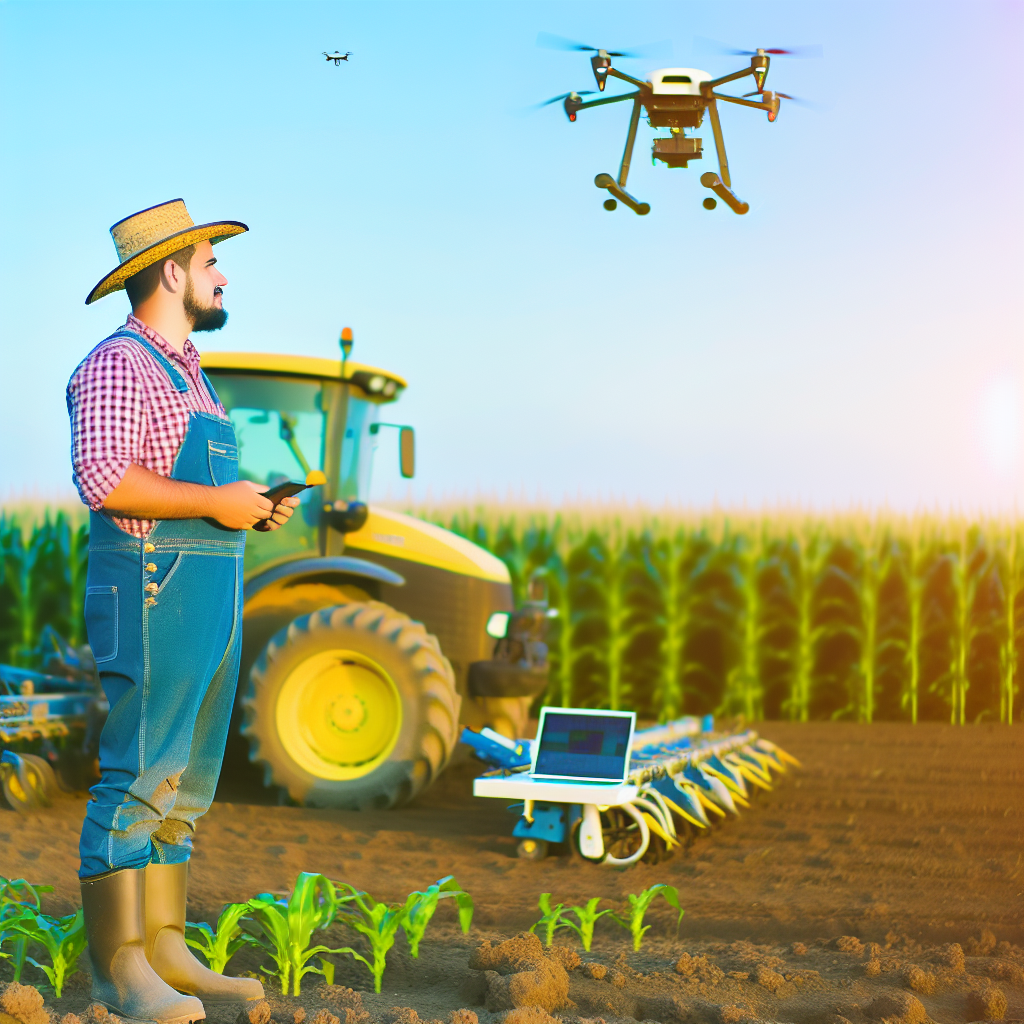
Farm Management Software: Streamlining Operations and Data Analysis
Importance of Farm Management Software
Farm management software plays a crucial role in modern agriculture.
It helps farmers manage their operations more efficiently.
This software allows for effective data analysis and decision-making.
Moreover, it provides insights into various aspects of farming.
Key Features of Farm Management Software
Farm management software often includes numerous essential features.
For instance, it offers tools for planning and tracking crop rotations.
Additionally, it assists with financial management and budgeting.
Many programs include inventory management for tracking supplies.
Furthermore, data analysis tools help optimize yields and reduce waste.
Benefits of Using Farm Management Software
Using farm management software provides various advantages.
Firstly, it enhances operational efficiency through automation.
This efficiency leads to reduced labor costs and increased productivity.
Secondly, better data management promotes informed decision-making.
Farmers can assess actions and make adjustments promptly.
Popular Farm Management Software Options
Several farm management software options have gained popularity.
CropTracker offers extensive management features and reporting tools.
FarmLogs specializes in field data tracking and analysis.
AgLeader provides robust tools for precision farming and planning.
Additionally, Trimble Ag Software supports a range of farming operations.
Choosing the Right Farm Management Software
Selecting the appropriate software depends on specific farm needs.
Evaluate what features are most important for your operations.
Consider factors such as ease of use and support availability.
Demo versions can provide insights into software functionality.
Furthermore, seek recommendations from fellow farmers for insights.
The Role of IoT in Precision Agriculture
Understanding IoT Technology
The Internet of Things (IoT) transforms agriculture significantly.
Farmers now connect devices to the internet for real-time monitoring.
This technology optimizes crop yields and resource usage.
Enhancing Connectivity
IoT devices ensure seamless communication in farming operations.
Farmers can access and analyze data from various sources quickly.
Moreover, this connectivity allows for remote management of equipment.
Automation of Farm Processes
Automation plays a crucial role in modern agriculture.
Irrigation systems can operate automatically based on soil moisture data.
This reduces water wastage and enhances efficiency.
Data-Driven Decision Making
The integration of IoT provides valuable insights to farmers.
Showcase Your Farming Business
Publish your professional farming services profile on our blog for a one-time fee of $200 and reach a dedicated audience of farmers and agribusiness owners.
Publish Your ProfileData collected includes weather patterns, soil health, and crop performance.
With this information, farmers make informed decisions to boost productivity.
Real-World Applications of IoT
Examples exist where IoT makes an impact in agriculture.
Smart sensors monitor crop conditions and send alerts when needed.
Drones equipped with sensors provide aerial images for analysis.
These applications demonstrate the effectiveness of IoT in farming.
Future Trends in Precision Farming Tools and Technologies
Rise of Autonomous Machinery
Autonomous machinery is set to transform agriculture significantly.
These machines require minimal human intervention for operation.
Farmers can automate tasks like planting and harvesting effectively.
Additionally, innovations in robotics enhance precision in fieldwork.
Integration of Artificial Intelligence
Artificial intelligence is revolutionizing data analysis in farming.
AI-driven tools help farmers make informed decisions quickly.
These systems can analyze crop health and soil conditions in real-time.
Furthermore, predictive analytics optimize farming practices efficiently.
Advancements in Sensor Technology
Sensors offer real-time data about environmental conditions.
Farmers can monitor soil moisture and temperature accurately.
This technology aids in resource management and conservation.
As a result, farmers can apply water and nutrients more efficiently.
Growing Use of Drones
Drones are becoming essential tools in precision farming.
These devices facilitate aerial surveys and crop monitoring.
Farmers can identify issues such as pest infestations swiftly.
Moreover, drones assist in precise application of fertilizers and pesticides.
Emphasis on Data Management Platforms
Data management platforms are crucial for integrating farm data.
Farmers need to centralize data for effective analysis and decision-making.
These platforms support various tools, streamlining operations on farms.
Consequently, farmers can enhance yields and reduce costs significantly.
Additional Resources
Value of Data/Info & the Payoff of Precision Farming – Purdue …

